Format: PDF e-book (v 1.0.0)
Delivery: Instant download
Price: $22.97 (USD)
Click Here to purchase (we have a new cart)
Note – you can pay with PayPal or any major credit card.
Also, check out our other books and videos – Click here
Nikon D5, D4, D4s
Nikon D850, D800, D810,
Nikon D750
NIkon D600, D610
Nikon D500
Nikon D7500, D7200, D7100
Nikon D5xxx series, D3xxx series
Nikon Z series (Z6/7)
Note that the vast majority of the information in this book also applies to older Nikon bodies as well (D7000, D3, D300, D700, etc). However, their specific control layouts, menu options and external switch locations are not referenced in the book. (This also applies to the Df.). Additionally, much of the information in this book can apply to any camera, regardless of the brand, it’s just that the specific examples, customizations, and usage lessons are geared for Nikon.
Master Your Exposure And Metering Controls!
Exposure and metering – no other pair of photographic tools has the potential to make or break your images like these two! And yet, completely leveraging them to create phenomenal imagery is one aspect of photography that continually eludes many photographers.
So many of us go through our photographic life with an incomplete understanding of things like shutter speed, F/Stop, ISO, metering, exposure modes, etc. Well, not anymore! This book fills completely in the gaps.
In this e-book, we tackle both exposure and metering – to the extreme! Just wait till you dive into the 670 + pages jam-packed with information, illustrations, photos, and examples that directly translate to killer images on your memory card each and every time you head out.
Chapter after chapter we peel away the mystery, myths, and enigmas surrounding exposure and metering – replacing the confusion with the rock-solid information you demand. Plus, the techniques described in this e-book are fully field tested and you can see the real-world results firsthand throughout the pages.
As for skill level, this e-book is written for every photographer. It covers everything from the very basics to advanced exposure and metering techniques, fully explaining everything in a non-technical, easy going style that makes comprehension both painless and fun. (I’ve been known to add a little humor here and there, what can I say?) The book takes the technical jargon and breaks it down into easy to digest bites that anyone can understand. No matter what your current skill level – beginner, intermediate, or even advanced – this book has something waiting for you to discover between the virtual covers!
Two Books In One!
This e-book is actually like getting two books in one!
In part one of the book, we carefully examine each aspect of exposure – shutter speed, F/Stop, and ISO. We thoroughly look at ways to leverage each to our creative advantage and how to prioritize one over the other. We explore how to use the controls at your fingertips to consistently and effortlessly create wall-hangers from the images in your mind’s eye. We sweep the myths and misinformation aside and learn rock-solid, field-tested advice.
Unlike many books, this doesn’t just gloss over what shutter speed, F/Stop, and ISO do – this digs deep to help you find new and creative ways to leverage the exposure controls at your disposal.
In part two of the book, we start our exploration by tackling all the various autoexposure modes available in your camera – and when and why to use them. We also discover just how easy shooting in full Manual mode really is when you understand how it all works! If you’ve ever wanted to learn to drive the camera in Manual mode, this book will get you there via Easy Street!
In addition, part two also explains how the various metering patterns work – everything from Center-weighted, to Spot, to Matrix, to Highlight-weighted metering are thoroughly covered. We explore how each thinks, and, more importantly, when and why to use each.
Of course, we also dive deep into topics like Exposure Compensation, using AE-L, tweaking your exposure in Manual mode, how to use Histograms, how to use Blinkies, and tons of tips and tricks for getting the perfect exposure each and every time.
And, naturally, throughout the process we talk about how to juggle shutter speed, F/Stop and ISO to create the type of images you want on your memory card. It’s not just enough to get a “nice exposure” – you also need to know how to use those controls to put jaw-dropping images on your card!
We even look at advanced exposure techniques like ISO Invariance, ETTR, HDR, and so much more – there’s even a bonus chapter for night shooting!
BONUS!
In addition to the Exposure and Metering book, you also receive an additional 60 page supplement covering deep focus techniques! This e-book shows you exactly how to achieve super-deep depth of field without resorting to small F/stops – A must read – and it’s yours FREE with your purchase!
Wanna see list of everything we cover? Taker a deep breath and we’ll look at the highlights chapter by chapter…
CH 1 – The Basics
- Understanding the absolute basics
- The difference between Shutter Speed, F/Stop, ISO
- A super-easy analogy to understand what exposure controls do
- Discover how exposure controls work together
- Unwrap the mysteries of reciprocity
- How “Stops” work with Shutter Speed, F/Stop and ISO
CH 2 – Shutter Speed
- Discover what shutter speed is really all about
- How your shutter works
- Learn about dangers of rolling shutter
- The real reason motion blur happens
- Discover the amazing ways shutter speed changes a photo
- The shocking truth about shutter speed, rate of travel, and distance
- Leveraging speed and distance to your advantage
- Why pixel density is critical when choosing a shutter speed
- Why you need more shutter speed / support with high MP cameras
- Discover the smartest way to choose the right shutter speed to stop action
- Beat camera motion for sharp images
- The new hand-holding shutter speeds
- The secrets to hand-holding a lens for the sharpest results
- Know when to use VR and when to turn it off
- The surprising way burst shooting helps you get sharp images
- Discover the best type of camera support – tripods, monopods, bean bags etc.
- Secrets to showing motion in your images
- How to choose the best shutter speed to show motion
- Understand how neutral density (ND) filter work
- The key to great panning
- Tricks for showing motion with your panning
CH 3 – Aperture And F/Stop
- Discover how your lens aperture works
- The critical difference between mechanical and electronic apertures
- How depth of field really works
- Unlock the mysteries of depth of field distribution
- Discover how Circle Of Confusion works – the easy way
- Learn impact of F/stop on depth of field
- Secrets to how distance influences depth of field – and how to take advantage of it
- Why focal length doesn’t affect depth of field the way you think
- The shocking thing everyone gets wrong about focal length and depth of field
- Why sensor size doesn’t affect depth of field
- Discover the real reason a crop camera seems to have more depth of field than full frame
- How to leverage crop and full frame sensor size to your advantage
- The unexpected negative side-effect of cropping your full frame sensor
- The secrets to choosing the right depth of field every time
- The key to using selective focus as part of your composition
- How to really annihilate terrible backgrounds
- Tips for keeping two subjects in focus with shallow depth of field
- Why mid-range depth of field is the go-to choice for so many images
- Learn to tell stories with mid-range depth of field
- Why mid-range depth of field gives you maximum sharpness
- How to leverage depth of field for action
- Lean when deep depth of field is the best choice
- How to get deep depth of field without small F/stops
- The terrible truth about diffraction
CH 4 – Understanding ISO
- Discover why ISO isn’t really an exposure control
- Learn why your camera only has one “real” ISO
- How your sensor collects light
- Secrets to how ISO really works
- How light from your sensor turns into an image file
- What signal to noise ratio is and why it’s critical you know
- Learn what really causes noise (and no, it’s NOT ISO!)
- Why shot noise is your #1 enemy
- Discover the real reason why noise increases as light levels fall
- Learn what read noise is and how it affects your images
- Discover the reason ISO doesn’t cause noise – and what the real culprit is
- The truth about why high ISO shots typically have more noise than low ISO shots
CH – 5 Advanced Exposure Considerations
- All about EV (Exposure Value)
- Learn the brightness differences between various EV levels
- How to use EV to determine exposure
- Discover all you need to know about dynamic range
- How to discover the dynamic range of your sensor
- The critical way ISO affects dynamic range and why you MUST know how it works
- Example photos of high and low dynamic range shots
- Tricks for maximizing dynamic range
- Why shadows are often too noisy – and how to prevent it
- Why cropping your image lowers photograph dynamic range
- Discover how bit depth works
- Learn which bit depth is right for you (12 or 14)
- How dynamic range and bit depth work together
CH – 6 Raw vs. Jpeg
- Which is better – Jpeg or RAW
- The advantages to shooting Jpeg
- Discover the even better reasons to shoot RAW
- See how RAW can make an incredible impact on your image output
- Why a RAW file has better dynamic range
- Compare RAW and Jpegs side by side to see the RAW advantage (dramatic!)
- How to make RAW easier and faster to post-process
- The easy way to make Jpegs from your RAW files
- Discover when and how to use the High ISO NR option on your menus
- Learn the best image quality settings
- Unlock the best RAW compression options
CH 7 – Autoexposure Modes
- Discover why Manual mode isn’t always the answer
- Why you MUST avoid “Idiot” modes!
- Unlock the secrets to effective use of Auto ISO
- Learn to set up Auto ISO – the correct way
- The two best guidelines for setting Auto ISO max sensitivity
- The FATAL mistake everyone makes with Auto ISO max shutter speeds
- The key to using Program mode successfully
- Learn the weird things that happen with P + Auto ISO
- How Shutter Priority works
- The Shutter Priority mistake everyone makes
- Why Shutter Priority and Auto ISO are a perfect match
- Discover why Aperture Priority is the most popular autoexposure mode
- How Aperture Priority makes it easy to juggle exposure controls
- The secret reason way Aperture Priority is the best way to get max shutter speed
- The key to using Auto ISO and Aperture Priority
- Discover the power of Manual + Auto ISO
- The surprising reason why M + Auto ISO is the autoexposure mode I use for action
- See real-world examples of why M+Auto ISO smokes all the other autoexposure modes
- Watch M + Auto ISO go head-to-head with the rest of the exposure mode dial
CH 8 – Full Manual Mode
- The critical mistake people make when then turn to Manual mode
- Why shooting in full Manual mode is WAY easier than you think
- Step-by-step instructions for shooting in full Manual mode
- How to adjust your exposure in full Manual mode
- Discover the best way to determine your Manual exposure
- Learn how to prioritize F/stop, Shutter Speed, and ISO
- Check out an example of Manual mode in action
- How to tell you’re day is done
- Why Manual mode isn’t a cure for poor light
CH 9 – Metering Basics
- What metering is and how it works
- The challenges of reflective metering
- All about middle-tone and why your meter loves it
- Why your meter underexposes scenes with bright tonalities
- Examples of what happens when your meter is faced with dark tones
- How to correct your exposure when faced with the wrong exposure
- Discover how to see like your meter
- Why your meter gets fooled sometimes
- How metering and AF play together
CH 10 – Metering Patterns
- How to change metering modes
- All about Center-weighted metering
- Learn how Center-weighted metering evaluates a scene
- How Center-weighted metering “weighs” the exposure
- Discover the best situations for Center-weighted metering
- How to customize Center-weighted metering for your needs
- Learn how Spot metering works
- Why Spot metering is both useful – and dangerous
- Learn where Spot metering takes its measurement
- How different AF modes affect Spot metering
- The HUGE mistake first-timers always make with Spot metering
- How poor Spot metering can destroy a perfectly good image
- The secret to using Spot metering effectively
- How to recognize situations where Spot metering will betray you
- Learn all about Matrix metering
- How to think like your Matrix meter
- Learn the times when Matrix metering will always miss the proper exposure
- Discover why Matrix metering is often the most reliable
- Using and turning on Face Detection with Matrix metering
- Unravel the mystery of Highlight-weighted metering
- How Highlight-weighted metering compares to Matrix for the same scene
- The secret to getting the most fromHighlight-weighted metering
- Find out if there really is a “best” metering pattern for you
- Learn how to customize a button to instantly switch metering modes
CH 11 – Outsmart Your Meter
- Discover the secret to effective exposure compensation
- How exposure compensation works
- Learn what exposure compensation adjusts in every autoexposure mode
- How to use exposure compensation to get a perfect exposure
- Why exposure compensation is often better than Manual exposure mode
- How Auto ISO works when exposure compensation is used
- Uncover the dangers of using exposure compensation
- How Autoexposure Lock (AE-L) works
- Why AE-L is a handy way to fix exposure problems
- How to setup AE-L on a programmable button
- Learn to use Manual Exposure to overcome metering errors
- The secret to knowing when to choose autoexposure or Manual mode
- The common scenario where Manual mode just destroys any autoexposure mode
Ch 12 – Histograms And Blinkies
- Discover how Histogram can help you get a perfect exposure
- Learn what a histogram is
- The easy way to read histograms
- How to use a histogram to determine if an image is over or under exposed
- Learn how histograms warn you of critical exposure issues
- How histograms help you prevent the worst exposure sin you can commit
- The dirty secret about histograms and RAW files
- How to set your camera to view histograms
- Learn to read a histogram with multiple examples
- Avoid common histogram reading mistakes
- All about blinkies
- Why blinkies are often a better, faster choice than histograms
- How to set your camera to show blinkies
- The reason I like blinkies better than histograms
CH 13 – Metering Tips And Tricks
- Discover how to use the “Sunny 16” rule
- Check out a handy chart for “Sunny 16” values at various F/stops and ISOs
- How to meter when there is no middle-tone
- Tips for metering any tonality and producing a successful exposure
- Why your hand is like a gray card with fingers
- The secrets to handling tricky situations that love to fool meters
- Handling mixed snow and subject conditions
- Discover the key to shooting properly exposed images in the fog
- The cool trick for perfect sunrise and sunset exposures
- Learn tips and tricks for handing backlight
- The secrets to successful silhouettes
- How to get backlit subjects that have detail
- The smartest way to expose backlit shots
- Four tips every backlight shooter must know
- All about the Active-D lighting “gimmick”
- How Active-D lighting really works
- Proof that shooting RAW will give you better results than Active-D lighting
- Learn all about bracketing
- Learn to manually bracket exposures
- How auto bracketing works
- Learn how to set your camera for auto bracketing
- The one critical thing you MUST do after auto bracketing
CH 14 – Advanced Exposure Techniques
- Discover exactly what ISO invariance is
- See examples and comparisons of normal ISO images and “ISO invariant” shots
- Learn why ISO invariance works
- How to test your camera’s ISO invariance
- Real-world examples of leveraging ISO invariance
- Using ISO invariance to shoot images that are “impossible” with a conventional exposure
- Why sometimes allowing the camera to underexpose is the smartest way to shoot
- Discover the truth behind the “lo” and “hi” ISO settings
- Unravel the mysteries of ETTR
- Why ETTR can sometimes help you get the most from your images
- How to use ETTR to get the maximum dynamic range from your sensor
- Learn to shoot ETTR
- Discover when to use ETTR and when to pass
- How to test your camera’s ETTR abilities
- Learn the truth about using ETTR at higher ISOs
- Discover how HDR can help you shoot beyond your camera’s capabilities
- How to shoot an HDR image set in the field
- How to create a final HDR image from your photos
- Discover how to crate a tasteful HDR image
CH 15 – Customizing Your Metering System
- Unwrap all the exposure and metering customizations your camera offers
- Discover how to decide the best way to set your ISO and Exposure step value
- Learn how to set and use Easy Exposure Compensation
- Unlock the mystery of the Fine Tune Optional Exposure menu
- Why your standby timer can keep you from making critical exposure errors
- Finally get your camera to show you the current ISO in the viewfinder
- All about Easy ISO
- How Exposure Delay Mode can help you get tack-sharp images
- Why you should use Electronic Front Curtain Shutter – and how to set it up
- The cool trick you can do with your Move Record button and ISO
CH 16 – Bonus Chapter – Night Shooting Basics
- Tons of tips and techniques for night shooting
- Why full manual mode is your best friend at night
- Learn how to pick the best lens for nighttime photography
- When and how to use the Long Exposure Noise Reduction feature
- The surprising way vibration sneaks in during long exposures
- How to fight dew
- How to focus the camera in the dark
- Learn the easiest way to determine the best exposures
- Learn how to successfully photograph the moon
- The surprising reason why the moon is your nemesis at night for stars
- How to find “dark skies”
- The rookie mistake all night shooters commit
- How to use the “300”, “500”, and “600” rule
- How to shoot the Milky Way
- How to photograph star trails
- Why star trails are tricky to shoot with digital
- How to find the North Star
- Discover the easy way to shoot star trails with a locking cable release
- Learn how to use your camera’s intervalometer for longer sessions
Whew!
Yup, there is a massive amount of information here! In fact, we’re talking over 670 pages jam-packed with reliable, time-tested advice that I’ve been using in the field for years. Check out the sample pages below to get an idea of what’s in store. As you can see, hundreds of photos and illustrations to help drive the lessons home!
Finally, if you’re still on the fence, think of it this way…
So many times we spend countless hundreds or even thousands of dollars purchasing gear that we hope will help us create more powerful images.
The truth is, gear is only a small part of the equation. Amazing imagery comes from YOU – the person standing a few inches behind the viewfinder.
However, when offered an opportunity to improve the part of their photography that could generate a quantum leap in quality, people often hesitate. I know for a fact that my best images were due to hundreds, even thousands of hours spent studying educational materials, not because of the gear.
So, that brings us to price. I’ve tried to make this completely affordable for any photographer – just $22.97 and it’s an instant download.
That’s basically less than a lunch date for a product that could improve your photography exponentially. Heck, even if you only discover ONE new trick or technique that helps you create an amazing image, wouldn’t it be worth it?
Check it out, you could be enjoying this new e-book in just a few minutes.
So, order now and you’ll have the book in a matter of moments!
PS – I’m 100% confident you’ll love this e-book. If you’re not satisfied, let me know and I’ll give you your money back – nothing to lose by giving it a try!




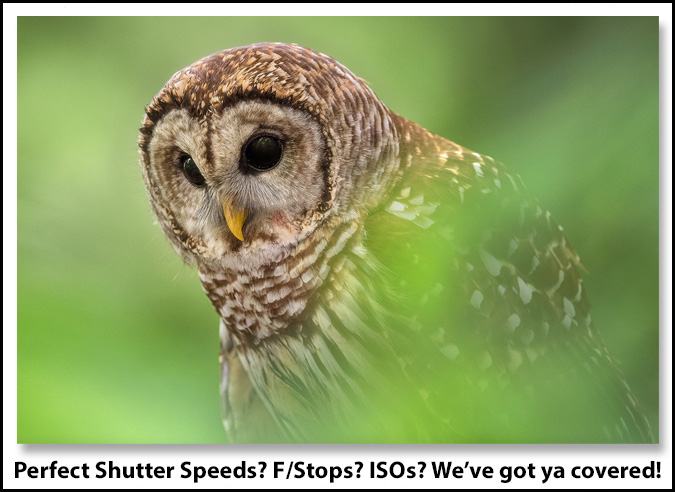

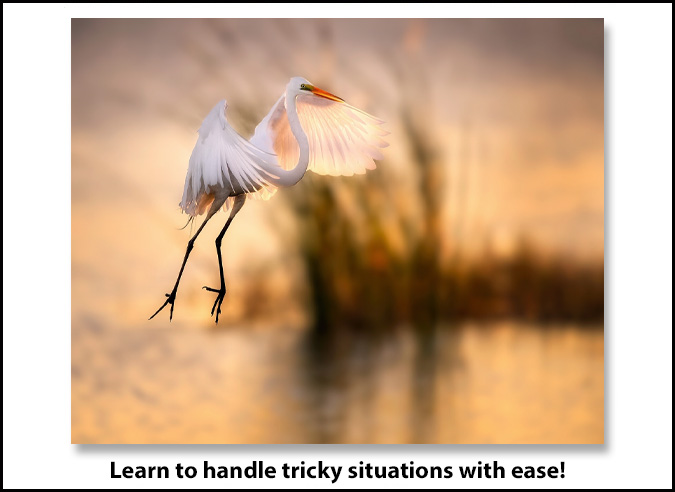
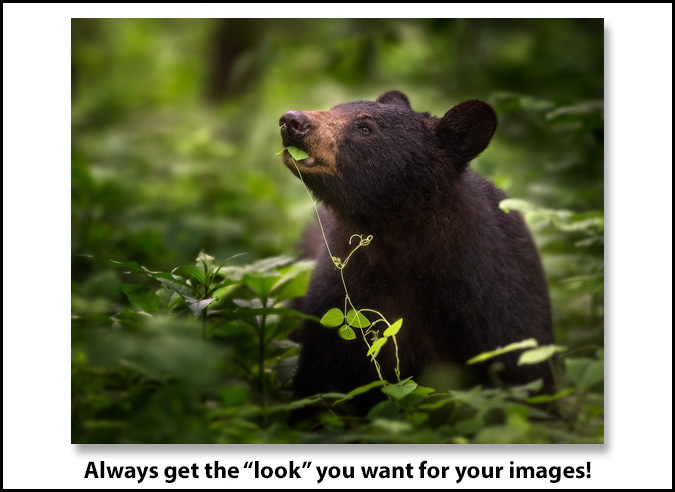
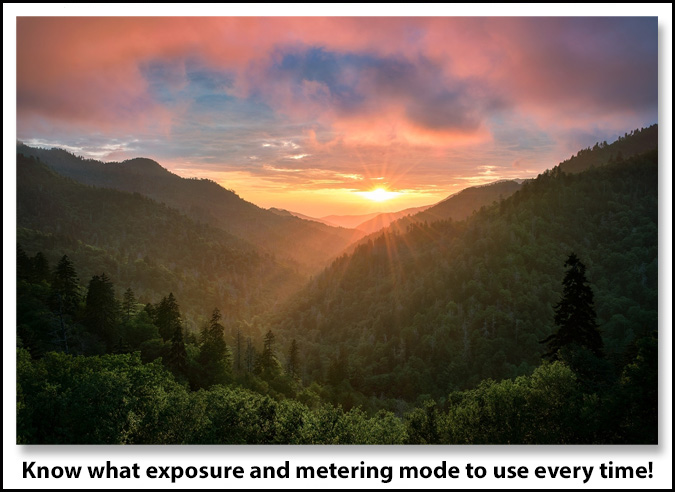
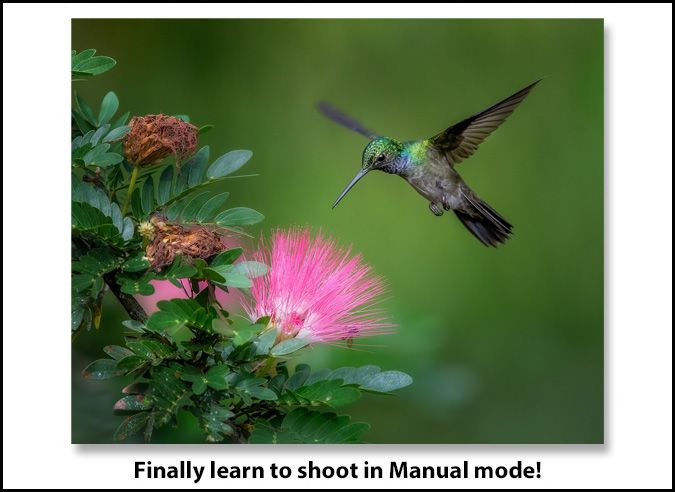



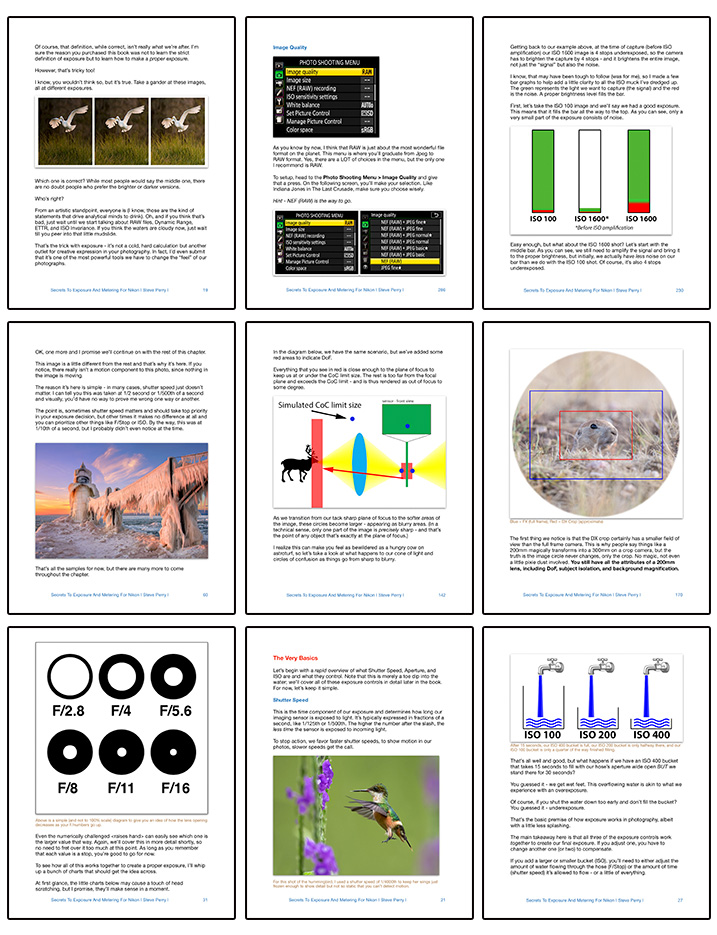
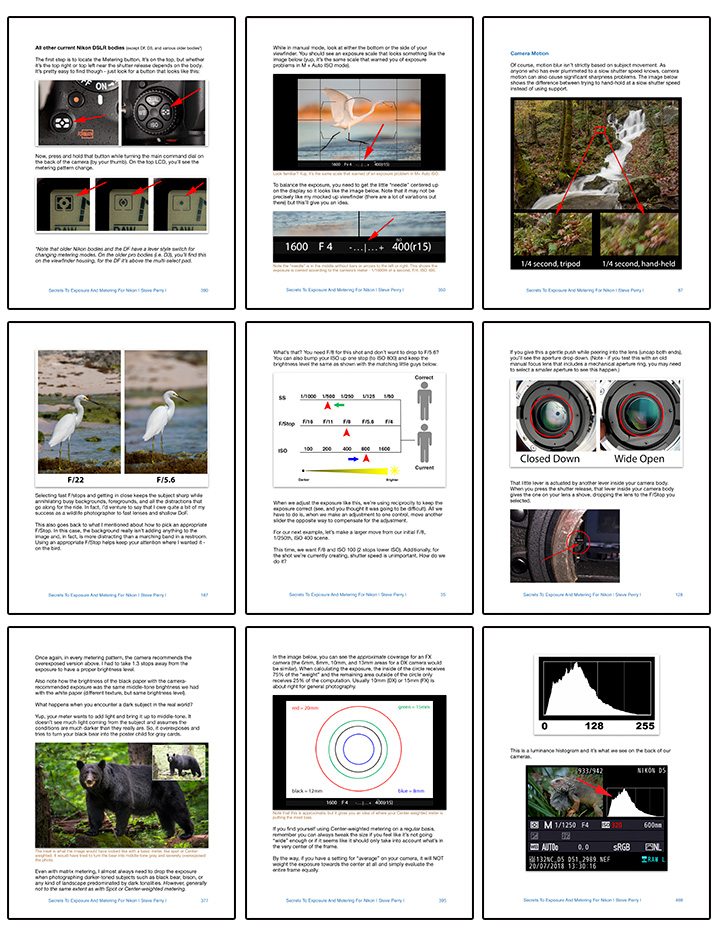

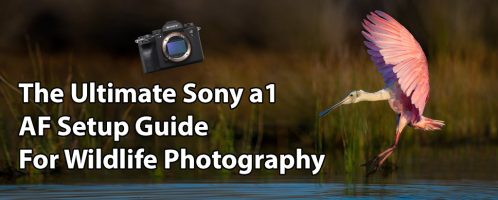

All I need to hear is that Steve has another e-book coming out and I place my order! I’ve been a photographer off and on for about 50 years so I pretty much know my way around but I have learned more from Steve than from any other source. Simply put his books, and this book in particular, are a treasure trove of invaluable info and advice. Any photographer from complete beginner to advanced expert will benefit from reading this and Steve’s other excellent photography books!
I tried doing focus stack with the AF-S Micro 105. It would not work with focus stack. it did not say on the screen Peak and It didnt show the grayed out last shot. When I put it through photoshop some of the pictures were off like I had moved the tripod. I tried a couple times. I have the Nikon z6. Have you tried this combo? I wanted to use it next year in Costa Rico. Any thoughts? Thanks
Hello Steve Perry, I just shot the most satisfying photo of my life (so far) – A California Condor at the Grand Canyon. Without hesitation, I owe a huge debt of gratitude to you. It’s the culmination of all of the following: * Exposure & Metering – particularly keeping the speed up * Autofocus – particularly rear button AF * Decision to ditch a Z7 trial and return to a D850 * Teleconverters * Finding a Subject with a Long Lens * Sharp Eyes * Auto ISO * A lot of practice While not a factor in this particular shot,… Read more »
Hi Malcom – Thanks for the kind words 🙂
Your testimonial is more than enough payment – I’m sure it will help sell quite a few books!
Thanks so much! Have fun in AZ and YNP – should be some great opportunities!
Thanks again!
Steve
I am still in the process of reading the book. I came across the photo stacking. I have the Z6. I was in Arches National park and tried this. I cant tell you how I felt when I was able to figure out how to do it and put it through Photoshop. I am not that great at learning new tricks. When I finished I was so excited with this new trick. The picture was in focus from front to back for the first time ever. I am in love with Focus stacking. THANK YOU.
Thanks for the kind words! So glad it helped:) I personally love the soft stacking option and just used it for a close-up of a yellow eyelash pit viper!
Steve, I working my way through ‘Exposure and Metering’. Most of the time I’m a ‘Manual’ shooter but I do occasionally wander into the Aperture Priority and Shutter Priority modes. I’ve tended to avoid Aperture Priority mainly because when I rotate the rear command dial it cranks up the ISO (something I was blissfully unaware of till I got caught and lost a heap of pics in the process). Through the menu on my D810 am I able to change that or is it there for good and just something that I need to be aware of when I use… Read more »
Hi Grant –
It sounds like you have Auto ISO turned on or Easy ISO turned on. In “normal” aperture priority, you set the ISO and F/stop and the camera drops or increases shutter speed to compensate. The book covers both Auto ISO and Easy ISO, so I won’t belabor the finer points here. Hope that helps – and thanks for the purchase 🙂
hello steve, I follow you from Italy and congratulations for your passion and professionalism.
Is the book also available in Italian?
Sorry, just English. I’m a one-man shop and can only write the language I know 🙂
Just finished the book, another really worthwhile purchase. Both informative and entertaining. The one thing I’d like to see as an addition is on the use of flash, specifically in the context of wildlife photography. I’ve read elsewhere that flash is helpful in bringing out the best in bird photography. But it seems like it can also flatten the image and maybe bother the birds. What do you think?
In your next update, a short chapter on exposure tips for using the flash would sure be nice.
Outstanding. Although a reasonably proficient amateur, I got a whole new insight into using my D7200. After reading and studying your book, I am a lot more knowledgeable (and confident) in using my camera, in all the modes, especially ‘M’. I also learned what and where my main screw-ups are. Great book…even the similes…”If questions were diapers, that would be the most loaded one of the bunch?”…”an outhouse breeze”…Really?
Need a place/site with more ‘exposure’ to the public to write a review beside your web site. N/A on Google? Amazon?
Your book saved me over $3,000! I have a D4 that I bought used last year as my first FX camera (I have the D500). I’ve been thinking of upgrading to the D5 mainly because of the inconvenience of the ISO button location, it’s a pain, especially when hand-holding. I just finished the book and I’m so happy to know I can reassign the ISO to be handy like on the D500. Between that and the performance information you shared, which shows advantages over the D5 in some situations, I’ll stick with the D4 ’till it dies. Awesome book, Steve.… Read more »
Steve, After watching one of your superb videos, I bought the ‘Secrets to the Nikon Autofocus system’ now despite shooting Nikon for a good few years, I was amazed at how much I didn’t know. So when the new book came out it was a no brainer, I bought it as soon as the notification hit the inbox. I’m a few chapters in and again I’m amazed at the stuff I’m learning (or perhaps correcting things I thought I knew) Have to say, I really enjoy your style of writing (including the jokes .. well kinda) and the attention to… Read more »
Hi Mike –
Thanks so much for the kind words! It’s great to hear you’re enjoying the read 🙂
Working my way through the book. It is a good read and already helpful. I like the technical specifics and explanations. They are succinct and do not “hand wave” or make things mysterious. I am a scientist by training and appreciate technical rigor and technical explanations. Already seeing things for me to practice and thinking about how I will have to adjust my thinking from my D750 and D600 to the new D3500 I got for just walking around photos. Thank you for the effort that went into this book. It is easily worth the price.
Thanks for the kind words Joe!
I was out this weekend shooting wildlife. What I learned from the book influenced my shooting and setting choices. Got some nice shots and more practice required before the thought process becomes automatic but a good start. Shooting pics of domestic camel herds in the flats and wild Hamadryas baboons in the mountains near Taif, Saudi Arabia.
Thought provoking read … especial.the DOF discussion regarding distance and how to exploit distance. A real ePub version would be nice. The bookmarking is nice vs just the pdf. The IOS save to Books creates a version with lots of black boxes before every image.
Thanks for the kind words and feedback. I am confused about the iBooks thin though – what version of iOS? I have the current iOS on my iPad and it looks as expected, no black boxes. I’ve also not had anyone else report that issue.
Morning Steve. Yes, now i have all three. After thoroughly enjoying the first too, and referring back to them often. Purchasing the third…no brainer. Just finished Shutter Speed section. Enjoying your attention to appropriate detail and sense of humor. Thank you for the time and effort you put in to sharing your photography knowledge. Reading your books certainly enables me to expand mine. Much appreciated.
Thanks so much Dave!!
Well, what can I say? Another stunning publication from a great teacher. Steve, your enthusiasm for sharing your hard-earned knowledge is so refreshing, and you charge so little for the e-books! Really, how can you feed your family when your prices are so low? I think I might know why you charge so little though – you just love helping others capture great images. I’ve added your latest tome to my collection, and now own all of your teaching resources. They’re all kept on my iPhone and that way you’re always with me when I’m out shooting and need some… Read more »
Hi Terry!
Thanks so much for the kind words 🙂 Enjoy the new book!
I cannot thank you enough, Steve, for your books. I bought the Secrets To The Nikon Autofocus System book first after watching your informative videos and joining your channel on YouTube. The amount of information and how you delivered it in an easy to understand way even for a beginner at the time blew me away and got me hooked. You being my favorite wildlife photographer, I decided to buy your second book, Secrets To Stunning Wildlife Photography, and once again, I was amazed! These two books were the best thing that happened to my photography learning curve. Out of… Read more »
Hi Ahmed –
Wow – thanks so much for the kind words! It’s incredibly kind of you to post. Thanks!!
Hi Steve. As I use M, auto ISO, F4-8 , shutter mostly over 1/1600 ,trigger finger on exp. comp, Raw & bracket when possible…will I get anything new from your book. Herons & Swans are always the trickiest..as you know
Shanti, Sounds like you have fairly advanced knowledge and technique. Hard to know exactly what you would get from the book, but I can share my own experience now that I have finished reading it. As a moderately advanced photographer, I found a number of topics well worth the full price each. These include the nuances of ISO equivalency, practical pointers about deciding when to use auto-ISO compared to when it is less useful, and the detailed review of the impact choice of focus mode has on the results output in the various metering modes. Even within chapters that are… Read more »
Thanks Robert I have Steve’s other books which are great, maybe a bit new in here on Auto ISO, or Nikon settings I may have missed…always ETTR to get enough shadow detail, but not always successful. I probably get it anyway just to support Steve, as he is doing great work helping people .
Thanks for your interest 🙂 I’d echo Robert’s comments. While I’d love to come in and tell you to “just buy it” it’s hard to say without really knowing your full skill set. I’d say if you seem to have a good understanding about the topics covered on the product page that you probably won’t get much out of it. If you spot topics that are a little “fuzzy” however, it might be worth the purchase. I think this book is good at “filling in the gaps” we all have with our knowledge and experience. In fact, part of doing… Read more »
I am like you and bought the book. While I have 30 years starting with a manual only, no in camera metering. I have still found the general exposure / dof reading interesting.
Excellent book deserving 5 star recommendation. High value in having emphasis on clear explanations of the fundamentals always organized to reveal practical implications for how to make choices among manual and automated settings as tools to achieve results. Each topic covers the basics well, then goes on to include in-depth material rarely found in typical books about exposure and metering. Excellent companion to Steve’s valuable book on Nikon auto-focus systems. Photographers using Nikon cameras should buy both books without any hesitation.
WOW – Thank you Robert!!
Steve ~
This is awesome! I should make you a footnote on every image I print.
Hi Steve,
I’m just about to purchase your new book, very pleased it included the Z6/7 as well as the DSLRs. I suppose you’ve got nothing to do now its released (LOL) so could you please update your Nikon Autofocus book to include the Z6/7 as well?
Thanks in advance.
It’s coming – but in the form of a new book. Too many differences between DSLRs and mirrorless to put them together. Too messy.
Hi Steve, looking forward to it! I am getting through your new book and loving it but I have a question on histograms that was not covered in the section starting on page 467 (you may cover it later in the book but I’m not there yet). The histograms you show are all after the shot reviews, then you advise to correct your exposure if you’re too far to the left or right. What about the histogram view on on Z6/7 that is seen in realtime? Is this a jpg or raw (I always shoot raw) display? I have been… Read more »
Hi Peter –
Oops – I forgot to add that info to the book! It’ll be in the next update under Histograms. In short, it’s just a guide and not as reliable as the finished histogram. It’s based off of the anticipated jpeg, not RAW, and there are reports it can show a “false” underexposure in dim light, even though that’s not the case. So, I still recommend shooting, verifying, and then adjusting (as needed) for ETTR.
I bought it this morning and was impressed as I always am with your books Steve. One question, can the .pdf be broken down into two or three files? As it stands I cannot transfer it to any of my tablet readers as it is over 50 megabytes.
Hi Ivan –
Not at this time – however – send me a message via my contact form and I can get you a smaller version. Images aren’t as nice, but it drops the size down to well under 50MB.
https://backcountrygallery.com/contact/
Thanks Steve, I managed to find a workaround then spent the next four hours glued to the book. It’s a terrific read.
Hi I wish these books were available in the kindle store. I bought Stunning Wildlife and while I was able to add it to my kindle library a lot of the reading/page features are unavailable.
That’s actually the reason it’s a PDF. E-Readers work better for books that are mostly text – when I’ve tired to output any of these e-books in kindle/ epub format, it pretty much wrecks ’em.
Thank You ! This must have been a big job to integrate
Enjoying the ISO Invariance explication on modern Nikons. Excellent synopsis
Saw your email first thing this morning and had it bought and downloaded before my first cup of coffee. Always enthused to read and watch your content, Steve. Probably, like many others, have been looking forward to this ever since you announced plans to write it. Will dive in after work tonight. A big advanced thanks.
I have been waiting and finally it´s here 🙂 I will place a order when i am back home. I got your “Secret to the Nikon Autofocus system” and “Secrets to stunning wildlife photography” and I am sure this one will be as good as them. Your youtube channel is also a source to knowledge. Keep up the good work!
I’m going to order this book, should be a fun read to see what I’m doing wrong….I see your prices have increased, must be good market penetration! Congrats Steve.
Ordered. Can’t wait to dig into it!